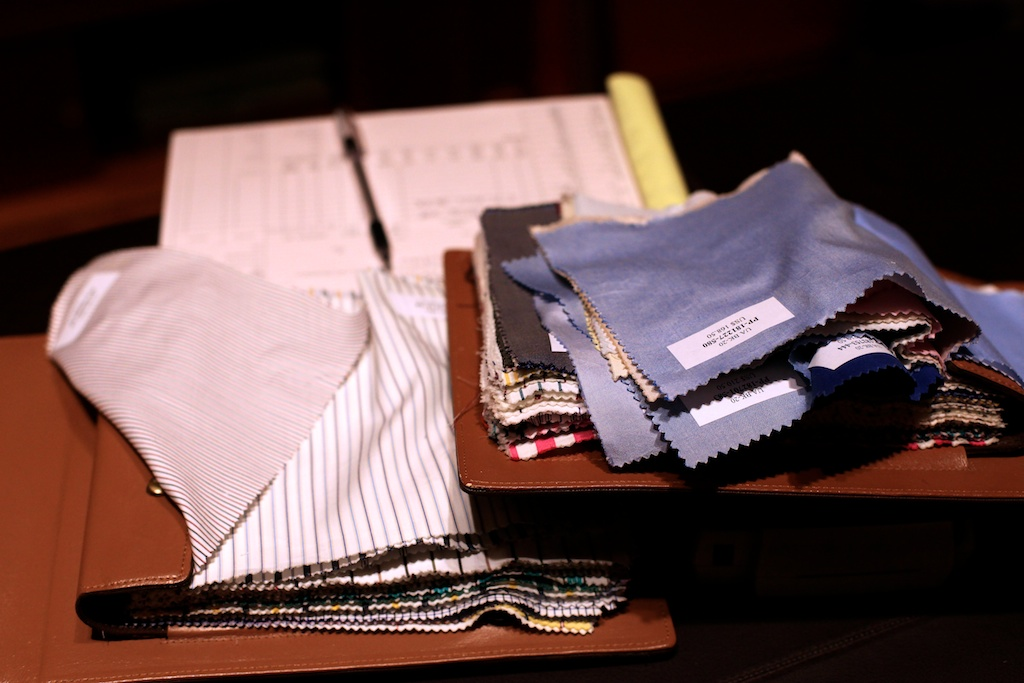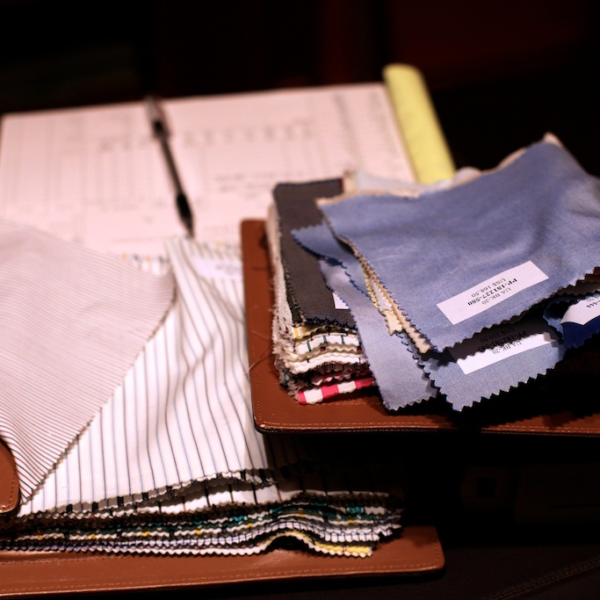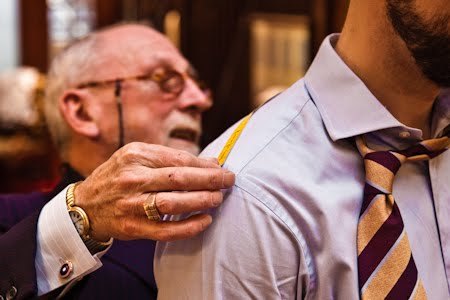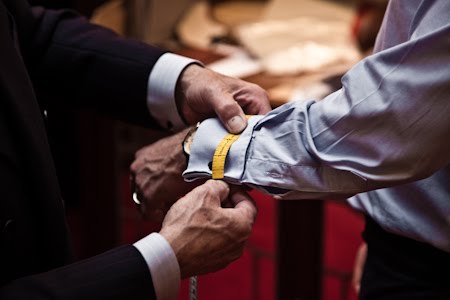
There are hundreds of places to get a custom shirt made. This week we’ll review some of them, starting with some of the traditional (and not so traditional) models for custom shirtmaking.
The Traditional Tailor
The most traditional way is going through a specialized custom shirtmaker. These include places such as Turnbull & Asser, Anna Matuozzo, and CEGO Custom Shirtmakers. What’s available to you depends on where you live, and if you search around StyleForum, you may find a number of recommendations.
There are a number of advantages to seeing a specialized tailor in person. For one, you’re more likely to get a bespoke and not made-to-measure service. This means that a specific paper pattern, from which your cloth will be cut, will be made for you. In made-to-measure models, a computer adjusts a pre-designed pattern to fit your measurements. Depending on your body type, bespoke may result in a better fit. Seeing a specialist also means the tailor can account for things not captured by simple measurements – things such as whether your shoulders curve or slope, what your natural stance is like, and whether you have protruding shoulder blades. Other shirtmakers mentioned in this series may be able to do these things for you, but your chances go up when you see a renowned specialist in the field (though, again, not everyone in this category can, so it’s best to inquire first).
I myself use Ascot Chang, and couldn’t recommend them more highly. Of all the custom shirtmakers I’ve gone to, none have made anything as cleanly, precisely, and consistently well fitting. In addition to the product, you’re also paying for their expertise and service. They can advise you on what cloths and collars suit you best, and once they make your order, they keep a stock of your shirting on hand so that they can make replacement collars and cuffs when you need them. If well taken care of, a custom Ascot Chang shirt can last for quite a long time.
The downside to these types of tailors is the price. Most shirts in this class start around $200, and there’s often a minimum first order of three to six shirts, depending on the tailor you use. At the same time, it’s important to note that these tend to be the best of the best. When compared to the price of high-end designer shirts – none of which will fit well – these represent an infinitely better value.
The Traveling Tailor Model
If you can’t go to a specialist, a specialist can come to you. A number of tailoring outfits travel around Europe and the United States in order to meet with clients. Such outfits include Napoli Su Misura, Dege & Skinner, and MyTailor. The upsides here are generally the same as the ones mentioned above (quality, fit, and service). The downside is that they can sometimes take longer to get your pattern right. With a traditional tailor, once you get your first shirt, you can take it home, wear and launder it a few times, and then bring it back so the tailor can see where adjustments need to be made. If your body changes over the course of time, your pattern can easily be adjusted as well. With a traveling tailor, you have to wait until they return, which sometimes isn’t for another four to six months. Still, if you’re not able to see a renowned specialist in your area, a traveling tailor is a good alternative.
The Hybrid Model
Lastly, we have J. Hilburn, which represents a sort of hybrid model. J. Hilburn has a number of regional representatives that meet with clients around the United States. These reps take clients’ measurements, walk them through the custom shirt ordering process, and deliver shirts to their home or office. I have a couple of shirts by Hilburn, and admit to being skeptical about the model at first. These aren’t people who have lifelong experiences in tailoring, after all. However, the woman who met me knew her stuff quite well and noted that everyone who works for the company gets trained in Texas.
The upside to J. Hilburn is that they have representatives in almost every city and they’re much more affordable. The starting price for a custom shirt here is about $90, which is about half of what a good tailor in the other categories will charge. The downside is that this is made-to-measure, so the fit won’t be as precise. My Hilburn shirts are just a touch tight in the chest and lower back, which makes the shirts a bit slimmer than I’d like. A friend of mine, The Silentist, also went to them, but found the shirt to be fuller than he’d like. Still, mine are perfectly serviceable, and although Hilburn offers to remake or alter any shirt that clients are unhappy with, I haven’t made a fuss about mine. Like with all made-to-measure clothing, I don’t expect the fit to be as good as bespoke; it’s simply meant to be decent enough for the price. To be sure, my Hilburn shirts certainly fit better than my off-the-rack garments, just not as well as Ascot Chang’s.
If you care to go with Hilburn, you can use my referral link to knock $50 off your first order (full disclosure: I get a small referral bonus). You can also learn more about them in an earlier post I wrote here.
The advantage of each of these models – the traditional, traveling, and J. Hilburn’s hybrid – is that you can see someone in person. This means being able to show someone how the first shirt fits on you, so that they can better make adjustments. It’s a mistake to think that you can figure this out on your own, or that you can turn to places such as StyleForum for “fit critiques.” How well a shirt fits is more nuanced and complicated than people give it credit for, and if you want something truly perfect, it’s best to see a specialist in person (particularly one who will make you a bespoke shirt). You can also rely on them for advice regarding collar and cuff styles, try on different collars (if they have samples you can see), and handle the fabric swatches in person.
On Wednesday, I’ll review some of the online custom shirtmakers, and talk about which I’ve had the best experiences with.
(Photos by Michael Williams and Simon Crompton)


